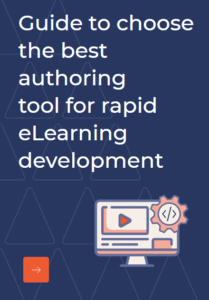This or that? Should I or Not? These are the questions that usually pop into our minds when we are spoiled for choice. In the eLearning Industry however, at times rather than the choices the hype catches you unguarded and before you know your organization is caught up in a bizarre learning strategy that wasn’t required at the first place.
As eLearning service providers, we have assisted several organizations with their learning strategies, however at times there have been situations where the client just came up with the idea of microlearning under the influence of popular trends. Microlearning like any other learning model involves planning and development cost, and so before going ahead one must be clear about what the organization’s learning requirement actually calls for? Is it microlearning, or just another short learning module? To answer this one needs to know what microlearning is.
Microlearning has become a popular term in the eLearning industry. Microlearning by definition is short, easily accessible learning, we have discussed in detail about what it is and how it could benefit the learning strategy, shared tips about how to make it successful, and quite recently discussed about most of our microlearning posts. Once the definition is clear, one can make informed decision about adopting microlearning, but that may not be enough. So, here are a few tips to find whether your organization needs microlearning.
Tip 1# Understand the Learning Ecosystem
As employees, or L&D professionals in an organization, you may be well aware of the business model and the learner schedules etc. However, along with that try to correlate it with the ways employees may learn, the environment that is provided for learning too. For an organization that involves lots of sales function, the learners are constantly on the go and may lack the time to undergo training for each and every product update. In such cases short and powerful performance support courses (microlearning) can be the best choice.In certain cases, organizations either have an open device usage policy or may lack the traditional training facilities making it difficult to organize scheduled training sessions, even in such cases microlearning comes in as a great way to deliver both partial and complete learning.
Tip2# Evaluate the Learning Infrastructure
As a continuation to the above mentioned. Many organizations may not have the necessary number of desktops to provide training. In some cases, the model of functioning may be more mobile, whereas in some cases the working location may be secluded or with low connectivity. In all these the infrastructure available would point towards a more mobile, manageable learning that can be easily accessed, unaffected by connectivity issues and such. All of which point towards microlearning that can be easily loaded due to smaller size and better optimization.
Tip 3# Know the Learners
The learners are the critical pieces when it comes to solving the puzzle around any learning strategy. As L&D professionals one must know the learners well to deliver the best learning. Start with the demographic, the device usage pattern, the time spent within the office, time spent travelling. Also investigate the aspects related to skill sets, how often they need on-the-job assistance, is finding time for training a major issue, or do they lack in attention span? If all the answers point towards short burst of learning, then microlearning may be just what you need.
While the tips described here may not answer it all. It sure can assist in making the choice clearer. With the modern learners, and the mobile workforce in picture, Microlearning is Ideal for Corporate Training, (here’s why). But, microlearning cannot always substitute a comprehensive eLearning course and hence, can be put to better use as a supportive tool too.
Still spoilt for choice? Get in touch, and we can help in finding the right answer.



